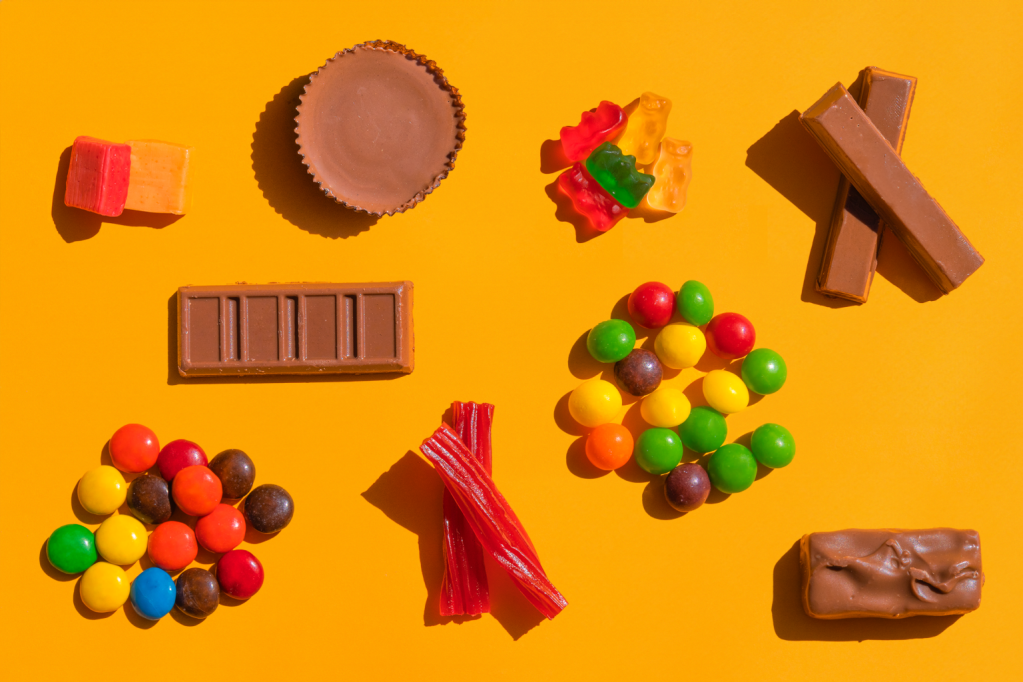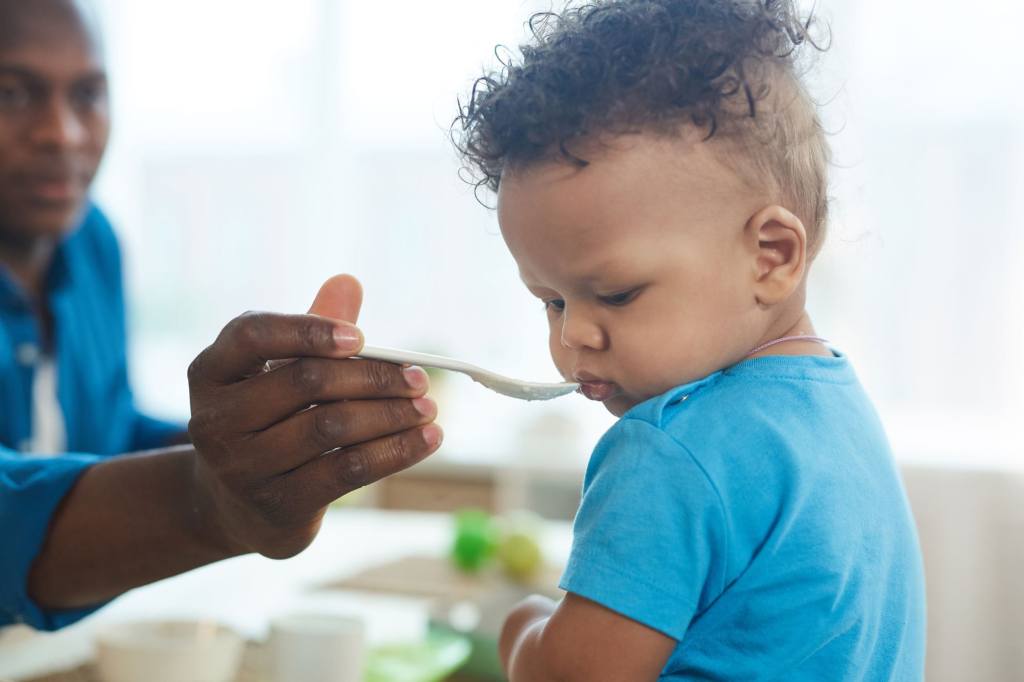Your cart is currently empty!
Say goodbye to bland, artificially flavored baby foods and say hello to a world of fresh, organic flavors straight from our kitchen to yours! What’s even better? They fuel your baby’s development!
What Baby Food Flavors Do Babies Prefer?
There are many factors to look for when choosing the best baby foods for your little one. Nutrition is important as it fuels your baby’s growing brains and bodies. Freshness is important as organic foods protect your baby from harmful chemicals, additives, and processed ingredients. Along with these factors, flavor is an important thing to look for in baby foods too!
Babies love flavor. They love spices, herbs, and natural flavors in their foods, so where can you find baby foods full of flavor and what flavors do they prefer? This article breaks down everything you need to know about your little one’s taste preferences, which flavors they like the best, and what flavor combinations to try!

When do Taste Preferences Form?
It’s no secret that sweet foods, salty foods, and fried foods taste good. While these foods will always taste good, there is a vital time in a child’s life where their taste preferences are malleable and can be shaped to set the stage for a lifetime of healthy eating. But when is this time? And how can you do this?
Taste preferences are most malleable during the first 1,000 days. From the day you become pregnant with your little bean to the day they turn 2 years old, their taste preferences are able to be influenced by what you eat and what you give your baby to eat.
One of the best ways to form your baby’s taste preferences and develop their palette is to expose them to different flavors early on. And babies love flavor, so this is an easy thing to accomplish!
Nutrition in the Womb:
Babies love familiarity. They love the familiar feeling of your arms around them, and they are more likely to enjoy foods you ate with them in your tummy because of the familiar flavors. Mothers, what you eat while your little one is still nestled inside your belly sets the stage for their taste preferences. If your sweet cravings got the best of your during pregnancy, there are still days to continue to form your baby’s palette!
Nutrition Before Age 2:
Any flavor exposure before the age of 2 increases the likelihood that your baby will make healthy food decisions in later life. In fact, if you want some tips on how to reduce pickiness and fussiness in your little eaters, try to expose your baby to as many new flavors and textures as possible! This develops a well-rounded palette and helps your baby enjoy more flavors.

Benefits of Early Flavor Exposure
Here are some of the benefits of early flavor exposure for your baby!
- Organic flavors are made from fresh herbs, spices, and ingredients. The more flavors you expose your baby to, the more nutrients they are benefitting from!
- By exposing your baby to more flavor combinations, smells, and textures, you train their taste and develop their palette. This sets the stage for their future health and increases the chances that they’ll make healthy food decisions down the road.
- Reduces pickiness and fussiness in your baby and child as they grow! When you help your baby gradually get used to change and new things, they’ll be more likely to try new ingredients and flavors later on in life.

Flavors Babies Like
The truth is that babies love flavor. Spices and herbs and fresh ingredients are packed with flavors that your baby loves! While babies love all kinds of foods like squash, vegetables, sweet potato, spinach, fruit, and apples, they like them even more when they’re spiced up with fresh herbs.
Below are some of the flavors your little one will love.
- Basil
- Ginger
- Cardamom
- Garlic
- Rosemary
- Cinnamon
- Nutmeg
- Onion
- Oregano
- Parsley
- Vanilla
- Lemon
- Cilantro
- Curry
- Black Pepper
- Clove
- Coriander
- Cumin
- Mint
For more flavor combos that your babe will love, check out our menu!

Your Baby’s Face of Rejection
Just because your baby might end up liking a food, doesn’t mean they’ll like it the first time. There are a few ways to interpret your baby’s face of distaste or disgust when you try to introduce new baby food flavors. In fact, it’s normal for your baby to make funny faces, gag, spit out food, and only eat small amounts of new food.
Baby’s aren’t the biggest fans of change. As they’re learning to interact with the world around them and processing the senses of smell, touch, taste, sight, and hearing, there’s a lot to get used to. So, if your baby rejects a food the first few times you introduce it, it may be because they’re overwhelmed with all the new things.
Babies typically need around 12 to 15 introductions of a new food before they start eating it and showing that they like it. So, if your babe pushes a spoon away or doesn’t want to eat a new food, don’t sweat it! They probably just need more time before they get used to it.
What’s the best thing you can do? Breathe. Relax. And try again.

Tips for Developing Your Baby’s Taste
Because of the importance of developing your baby’s taste and texture palettes during the first 1,000 days of life, here are some tips to help.
Offer Variety
One of the best ways to develop your baby’s taste and texture palettes is to offer variety. Offer new foods and flavor combinations to expose your little one to as many flavors as possible.
To do this, try to introduce different flavors of vegetable purees and fruit purees. Some naturally sweet foods can also help develop your baby’s palette to appreciate organic fruits, so you can even feed them a healthy fruit dessert such as this Strawberry Basil Pie with only five organic ingredients straight from the farm.
Don’t Add Salt or Sugar
By introducing vegetables, fresh foods, and organic, naturally flavored ingredients into your baby’s diet you increase their preference for healthy foods. In the same way, if your baby is overexposed to foods with added salt or sugar during their most formative years, they may develop a preference for salty and sugary foods instead.
So, how can you avoid this? If you’re making homemade baby food, there’s no need to add salt or sugar to add flavor. In fact, overexposure to salt and sugar can lead to serious health problems such as early liver damage, issues with heart health, high blood pressure, high cholesterol, and weight gain from too much sugar.
If you’re buying store bought baby foods, look for no added sugars and salts. Pay close attention to the ingredient list on the back and stay away from any ingredients like sodium chloride, sucrose, fructose, and glucose. If a baby food is high in salt or sugar, this may be to preserve the shelf life of the food, but it can be harmful for your baby and likely contain harmful chemicals and additives as well.
Expose New Flavors More than a Few Times
As mentioned before, your baby may need up to 2 dozen exposures of a new food before they start to eat it all without making a funny face. However, even during these times, your baby’s taste buds are being exposed to a new food and developing, so no exposure is a waste!
Set the Example
You’ve likely heard the saying “monkey see, monkey do”. As cliche as it is, it’s true. One of the most powerful ways children learn is by watching others do something and then imitating it themselves. So, if you want to teach your child how to have a healthy relationship with food and how to make healthy, nutritious food choices, the best thing you can do is to set an example!
We know this isn’t always easy, but it can make all the difference. One way you can show your child that you have a healthy relationship with food is to honor your body and take care of it by giving it nutritious foods to fuel it. Your body does wonderful things—you brought your little one into the world for starters! And it will continue to do wonderful things. By having a healthy relationship with food, you can help your little one do the same.
Summary
Along with making sure your little one gets the healthy, nutritious foods they need to grow and thrive, you want to make sure they enjoy it too! By exposing your baby to fresh ingredients, flavor-packed herbs, spices, and new foods and flavor combinations, you can set the stage for their future nutrition and develop their taste and texture palettes.
It’s important to keep in mind that babies aren’t fans of change. Change is scary, so new flavors may seem scary too. By slowly introducing new flavors again and again, you can make all the difference!
Explore our menu here to find over 60 unique baby food meals made by our nutritionists!









